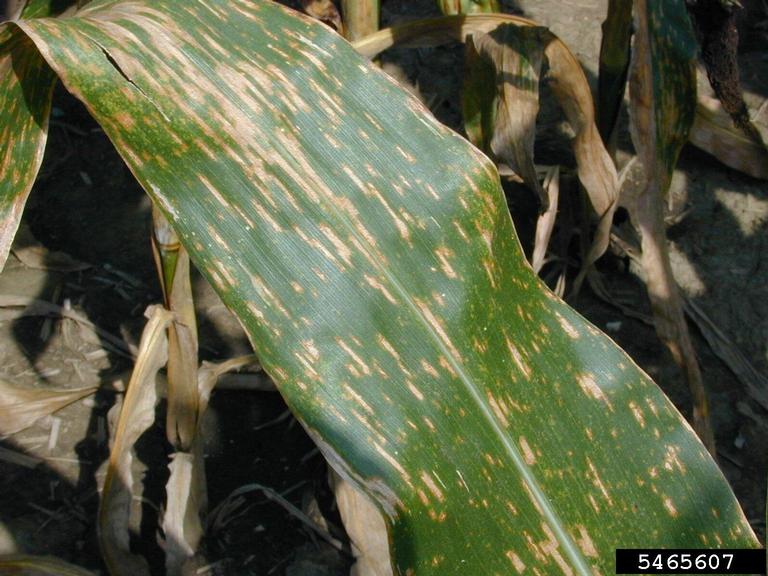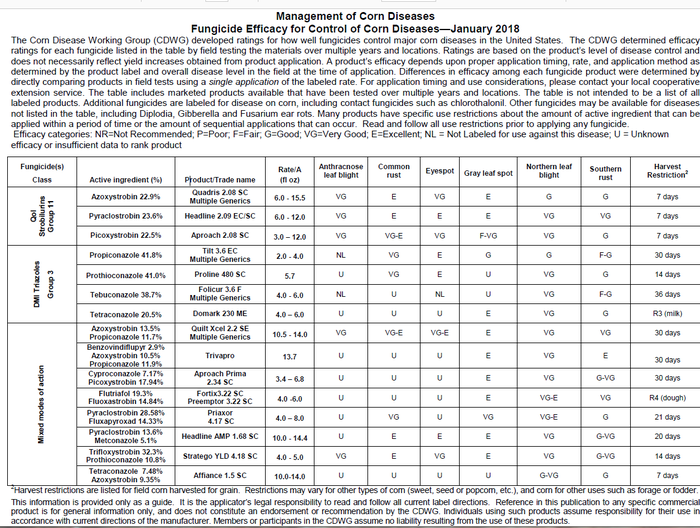July 3, 2018

Source: Ohio State University
Foliar diseases, especially Gray Leaf Spot (GLS), are beginning to show up in some corn fields. This is not at all surprising, given that the crop was planted relatively late and it has been wet and humid in some areas. GLS is favored by humid conditions, particularly if temperatures are between 70 and 90 F. Foliar diseases of corn are generally a concern when they develop early and progress up the plant before grain fill is complete. This is especially true when the hybrid is susceptible. In most years, GLS and NCLB usually develop late or remain restricted to the lower leaves. However, if it continues to rain and stays humid, this will likely not be the case this year.
Due to wide variations in planting dates, weather conditions, and hybrid maturities, the corn crop is at growth stages ranging from emergence to tassel across the state. Now is the time to start scouting those early-planted fields for foliar diseases, especially those planted with susceptible hybrids in an area with a history of foliar diseases or in a continuous-corn, no-till fields. Those are the fields most likely to benefit from a fungicide application. Use hybrid susceptibility, weather conditions, field history, and current disease level as guides when making a decision to apply a fungicide.
Based on years of research, we have found that applications made at silking (R1) or tasseling (VT) are the most effective in terms of foliar disease control and yield response in Ohio. Although we have seen a yield response to treatments applied between V4 and V10 in some years, the average yield increase is often low and highly variable when fungicides are applied before VT/R1. Similarly, on average, the yield response is much lower and more variable when fungicides are used under low disease pressure or in the absence of foliar diseases, than when disease is present.
There are several very good fungicides to choose from. Follow the labels and keep your eyes on the fungicide price and application cost when making a decision. Use the information below to help you make your fungicide application decision:
Susceptible hybrids: If disease symptoms are present on the third leaf below the ear or higher on 50% of the plants examined, a fungicide is recommended.
Intermediate hybrids: If disease symptoms are present on the third leaf below the ear or higher on 50% of the plants examined, AND the field is in an area with a history of foliar disease problems, the previous crop was corn, and there is 35% or more surface residue, and the weather is warm and humid through July and August, a fungicide is recommended.
Resistant hybrids: Fungicide applications generally are not recommended.

About the Author(s)
You May Also Like




